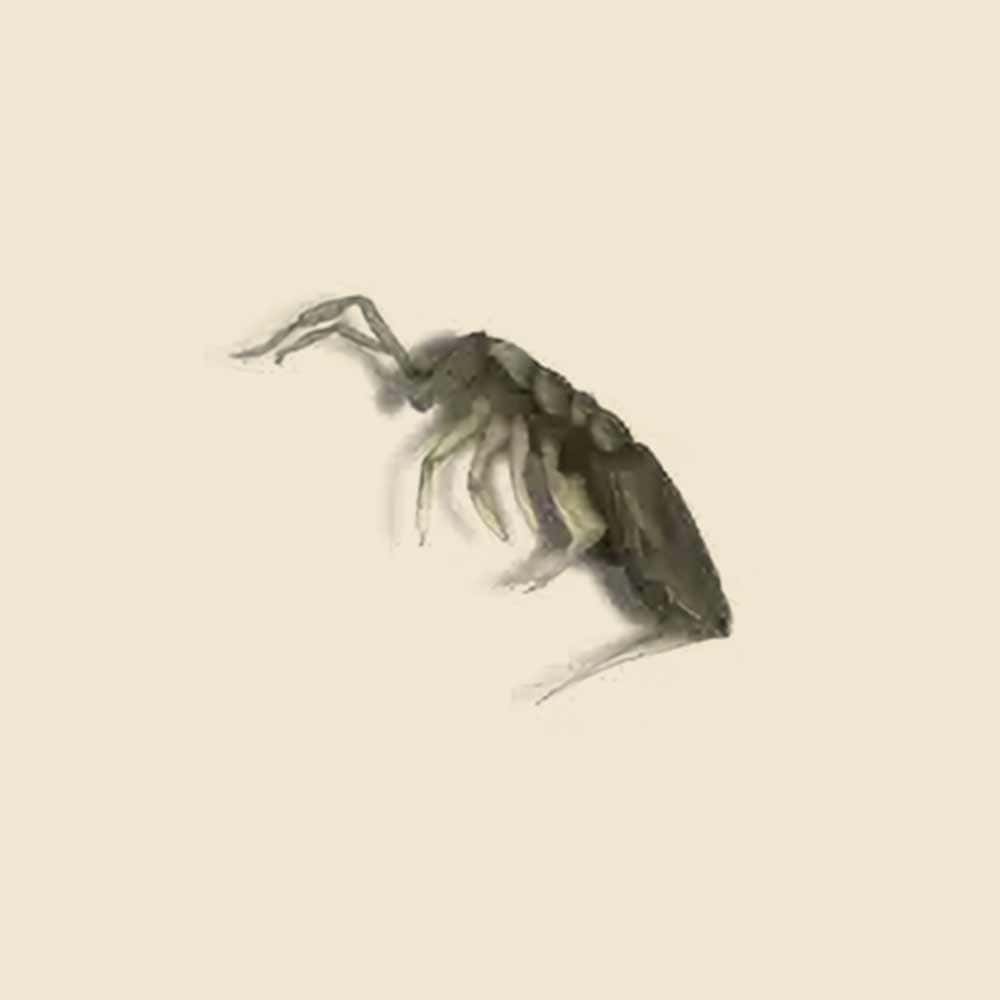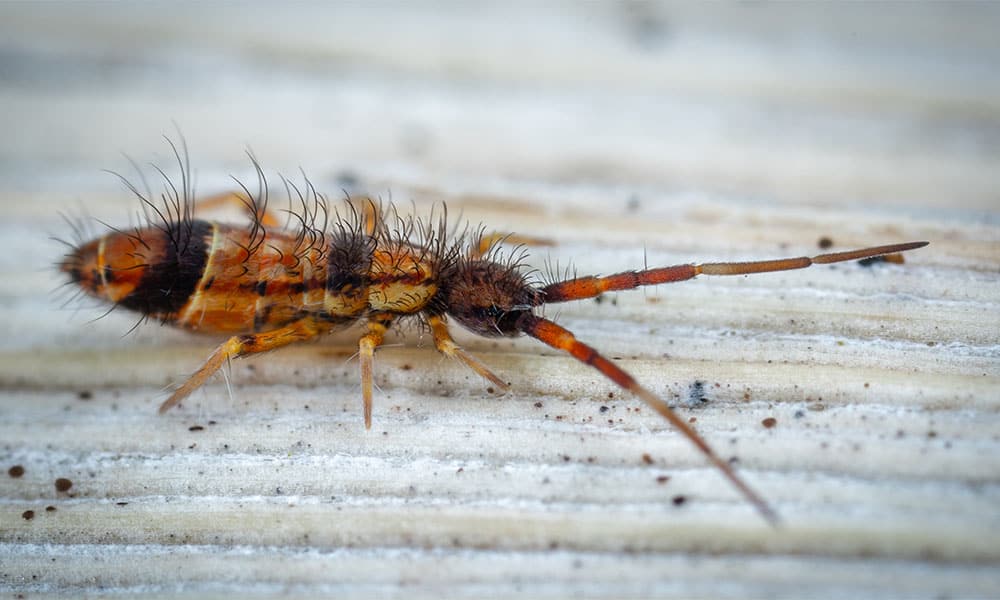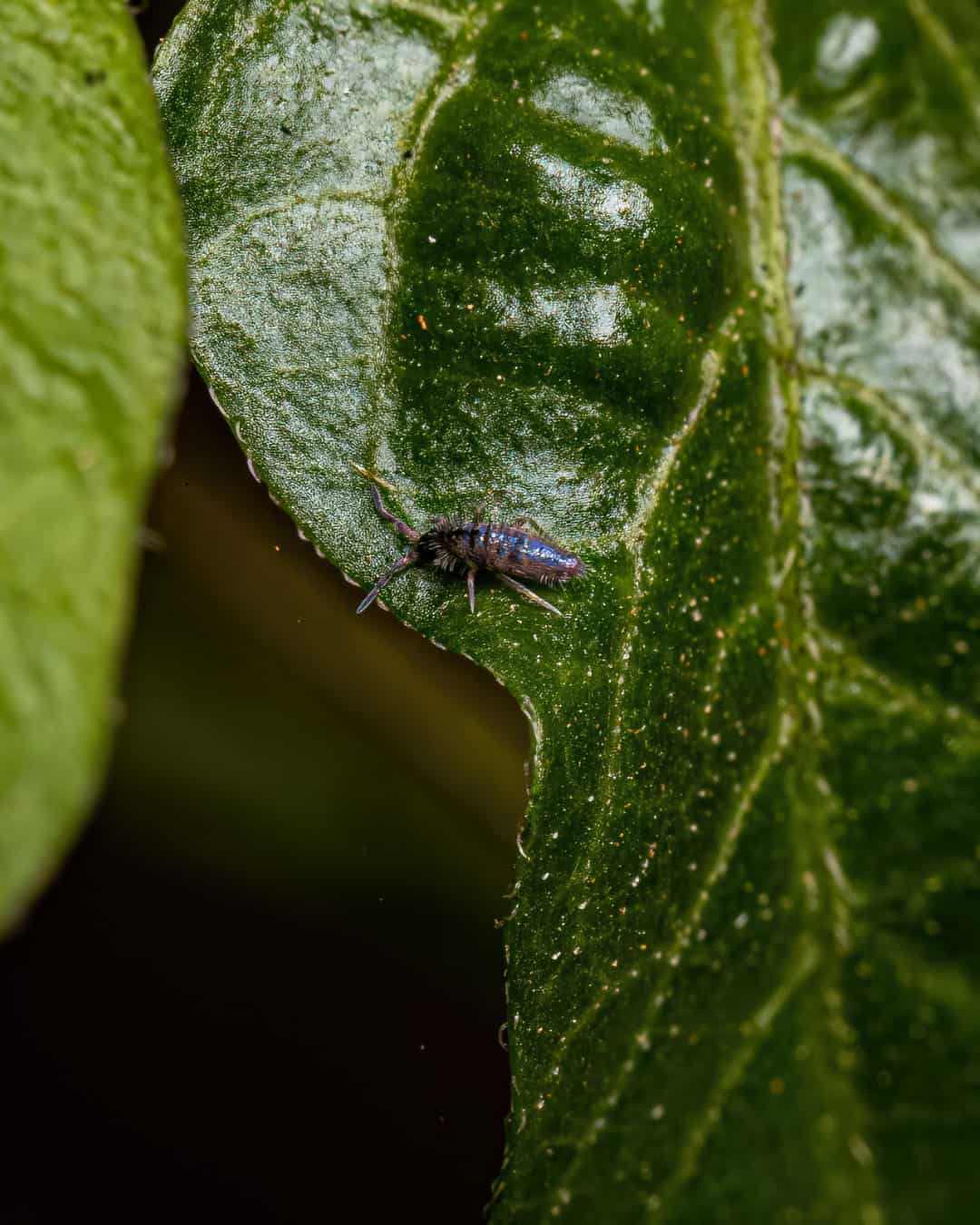Springtail Facts & Information
Springtails, tiny and agile insects known for their jumping ability, can become a nuisance in homes and gardens. Their presence is often indicative of high moisture levels and can lead to significant issues if not managed properly.

Collembola
What You Need To Know About Springtails
What do springtails look like?
Springtails are tiny, wingless insects, typically measuring between 1/16 to 1/8 inch in length. They have a soft, cylindrical body that is often pale white, gray, or brown. One of their distinctive features is the presence of a specialized structure called a furcula on their abdomen, which they use for jumping. Their bodies are covered with tiny, fine hairs.
What do springtails eat?
Springtails primarily feed on decaying organic matter, including fungi, algae, and leaf litter. They play a crucial role in breaking down dead plant material and contributing to soil health by aiding in nutrient recycling. They may also consume microscopic organisms such as bacteria and protozoa.
What sort of habitat do springtails live in?
Springtails are found in a variety of moist environments, both indoors and outdoors. Outdoors, they inhabit soil, leaf litter, compost piles, and under logs or stones. Indoors, they may be found in damp areas such as basements, bathrooms, and under houseplants. They thrive in environments with high humidity and decaying organic matter.
How do springtails commonly behave?
Springtails are known for their jumping ability, which they achieve using their furcula. This structure acts like a spring, allowing them to leap away from potential threats. They are primarily nocturnal and are most active in damp conditions. They are generally harmless and are considered beneficial insects due to their role in decomposition.
Did you know this about springtails?
Springtails are named for their remarkable jumping ability, which is facilitated by the furcula. When they are disturbed, the furcula is released from its hook, propelling the springtail into the air. Despite their small size, springtails are one of the most numerous insects on the planet, with some estimates suggesting there are more than 1,000 species. They play a vital role in the ecosystem by helping to decompose organic matter and maintain soil health.
Understanding Springtail Infestations
Understanding springtail infestations is crucial for effective management. Springtails are small, measuring only 1/16 to 1/8 inch long, and are characterized by their ability to jump using a tail-like structure called a furcula. They are commonly found in moist environments, including soil, mulch, and decaying organic matter. Springtails are often seen indoors in areas with high humidity, such as basements, bathrooms, and kitchens.

How Hearts Handles Springtail Treatment
Hearts Pest Management employs an integrated pest management approach to handle Spring Tail infestations.
Springtail Inspection
Springtail Treatment
Springtail Prevention
Educational Resources

Think You Might Have a Springtail Infestation?
At Hearts Pest Control, we understand the challenges associated with Springtail infestations and are here to provide professional solutions tailored to your needs. Flourishing in warm and humid climates, they are prevalent in many regions, including San Diego County, Orange County, and Los Angeles County.